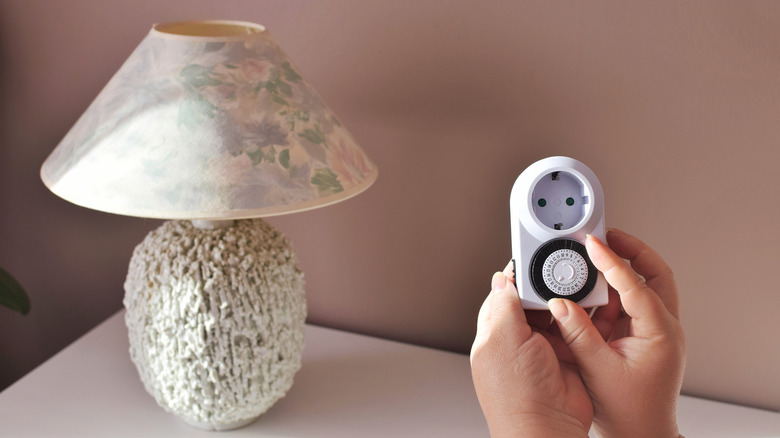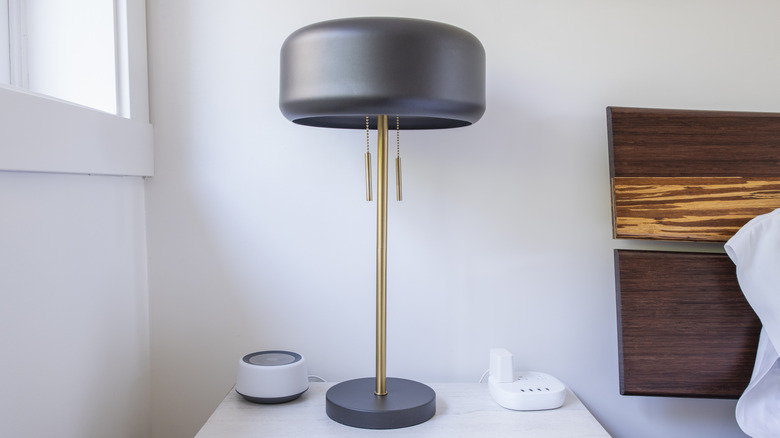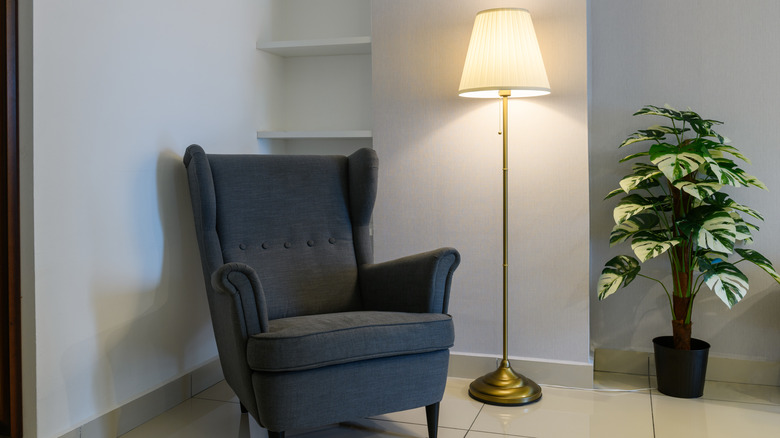Why You Should Put All Your Lamps On Timers
The type and design of a home's lighting affect mood, safety, functionality, and aesthetics, making it an essential element of its overall design. Finding the perfect lamp for your space will add to the overall look of a house, provide practical illumination, and create a cozy and welcoming ambiance. Lamps can be categorized by the type of lighting they provide, which includes ambient, task, accent, and decorative lighting. A great way to maximize the use and benefits of lamps in the house is to use timers.
Lamp timers, sometimes referred to as lighting timers or time switches, are electrical devices that include built-in clocks that let you regulate when lights and other electrical devices turn on and off. Some of these timers feature time scheduling options for when a device would be active. You can also determine the duration they are powered on or off, removing the need for a manual switch.
Using lamp timers has several advantages, such as lowering energy costs by ensuring lights are only turned on when needed, especially in areas where they are frequently used, like living rooms, corridors, and bedrooms. Next, they help with security since they discourage intruders by making it seem like people are home even if no one is. Timers also provide convenience by automatically powering on the lamps at pre-selected times. Finally, using timers is one way to make your appliances last longer by precisely regulating their operating times.
Types of light timers and how they work
Light timers are versatile, so they can be used by themselves, with a security system, or with single or multiple power outlets. They work by controlling the flow of an electrical circuit at preset times. This then allows the lamp to turn on and off automatically, following the predetermined schedule. The two main types of light timers are plug-in timers and in-wall timers, and their difference lies in how they connect devices to the power source. A plug-in timer is plugged into a wall socket, then the lamp's cord is plugged into it. An in-wall timer replaces a regular light switch and is connected directly to the wiring inside the walls.
Along with the two main types, other variations include mechanical, digital, and smart light timer. Mechanical timers operate using a dial or other mechanical device. Digital timers are more advanced and can be programmed to allow more intricate scheduling via a digital display and buttons. Smart timers are the most advanced option, as some have features like remote control and surge protectors, and can even be operated with voice commands or an app.
Note that some timers work on inductive loads, such as fans, while others are for resistive loads, like incandescent bulbs. Always check the specifications of the timer switch and the device you're plugging into it to prevent any mistakes. Also, regularly inspect and modify the settings of the light timer following seasonal changes like daylight saving time.
Are lamp timers really energy-saving?
Electrical timers save energy by automatically switching off lights, so appliances are only turned on when needed. Thus, they provide a strong return on investment by lowering electricity bills because lamps consume less energy. Also, many gadgets use a tiny amount of energy in standby mode, even when they are off, as long as they are plugged into power. This standby power is needed because the internal electronics of appliances such as control boards and microprocessors require power to respond to commands. However, timers can be used to switch off the power totally when these devices are not in use, saving a significant amount of energy.
To maximize its efficiency, you should use the light timer as part of a bigger energy-saving strategy. One way is to use lamps with LED bulbs, which use less power, and another is by using timers in conjunction with motion sensors or photocells to increase efficiency. For both of these options, you limit the time the lamp is in use. With motion sensors, lights will only turn on when they sense activity in the room, and with photocells, lights react to the natural light levels in the room. These changes are great ways to reduce your energy costs at home with the help of a light timer.


